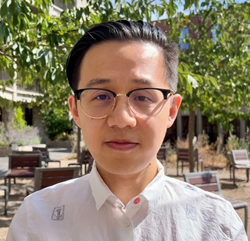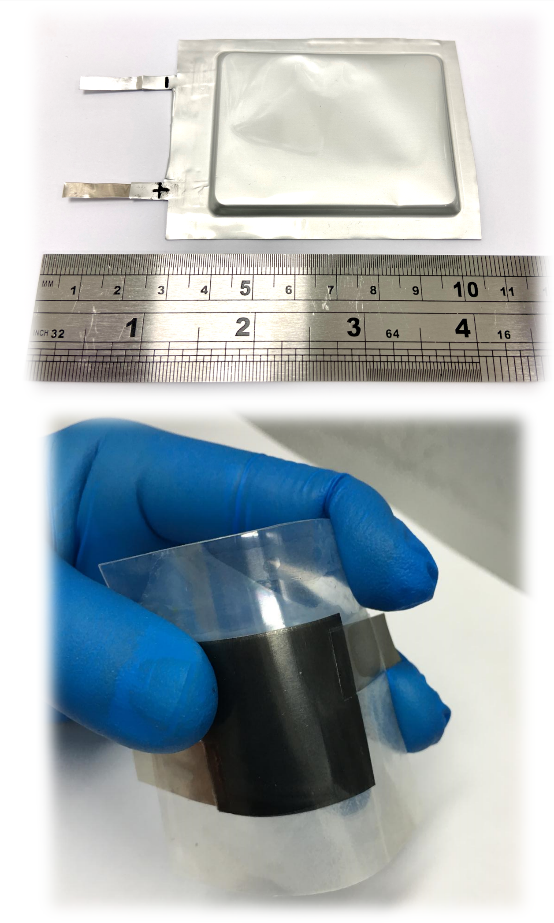
Research Fellow (King's College)
Herchel Smith Fellow
BSc Jilin University
MEng University of Manchester
PhD University College London
2D Materials for Electrochemical Energy Storage
My research focuses on materials design for electrochemical energy storage systems, such as batteries and supercapacitors. Next-generation energy storage technologies need to feature high-energy, fast-charging and long-life. Atomically thin two-dimensional materials have shown great potential on enabling these targets, while further development relies on more fundamental understanding on their chemical and electrochemical properties.
Li-S batteries
Li-S batteries based on conversion reactions have been long expected as a promising post-lithium-ion battery technology owing to the ultrahigh theoretical energy density and the low raw material cost. The practical implementation of Li-S batteries, however, is still hindered by their poor cycling stability and limited attainable energy density. My recent work has demonstrated that metallic 2D transition metal dichalcogenides (TMDs) can be an ideal sulfur host material for high-performance Li-S batteries. Superior energy densities are therefore achieved in the proof-of-concept Li-S pouch cells with metallic TMD hosts. Subsequent projects are ongoing to investigate the role of TMDs in Li-S chemistry.
Supercapacitors
Supercapacitors can be charged within seconds and used for thousands of cycles. Energy storage in supercapacitors is realized by voltage-driven accumulation of ions to counterbalance the surface charge of electrodes, known as double layer formation. Thus, 2D graphene is considered as a transformative electrode material for supercapacitors due to its good conductivity and extraordinary specific surface area - for example, just few-gram-weight individual sheet of graphene has the surface area capable of covering an entire football pitch. My research involves multiple strategies on developing graphene-based electrodes, such as engineering graphene sheets at a molecular level, regulating the interaction between adjacent layers, assembling 2D sheets into 3D architectures. This project aims to study the structure-property correlations of 2D materials and explore how to build better supercapacitors.
|
Figure: Photograph of fabricated Li-S pouch cell (top) and flexible all-solid-state supercapacitor (bottom) |
 |
- Li, Z.; Sami, I.; Yang, J.; Li, J.; Kumar, R. V.; Chhowalla, M., “Lithiated metallic molybdenum disulfide nanosheets for high-performance lithium-sulfur batteries”, Nature Energy 8, 84-93 (2023)
- Li, Z.; Bird, L.; Kumar, R. V.; Ferrari, A. C.; Grey, C. P.; Chhowalla, C., “Chapter 15. Advanced characterisation techniques for Li–S cathodes in 2021 roadmap on lithium sulfur batteries”, Journal of Physics: Energy 3, 031501 (2021)
- Li, Z.; Gadipelli, S.; Li, H.; Howard, C. A.; Brett, D. J. L.; Shearing, P. R.; Guo, Z.; Parkin, I. P.; Li, F., “Tuning the interlayer spacing of graphene laminate films for efficient pore-utilization towards compact capacitive energy storage”, Nature Energy 5,160-168 (2020)
- Li, Z.; Gadipelli, S.; Yang, Y.; He, G.; Guo, J.; Li, J.; Lu, Y.; Howard, C. A.; Brett, D. J. L.; Parkin, I. P.; Li, F.; Guo, Z., “Exceptional supercapacitor performance from optimized oxidation of graphene-oxide”, Energy Storage Materials 17, 12-21 (2019)
- Li, Z.; Gadipelli, S.; Yang, Y.; Guo, Z., “Design of 3D graphene-oxide spheres and their derived hierarchical porous structures for high performance supercapacitors”, Small 13, 1702474 (2017)
